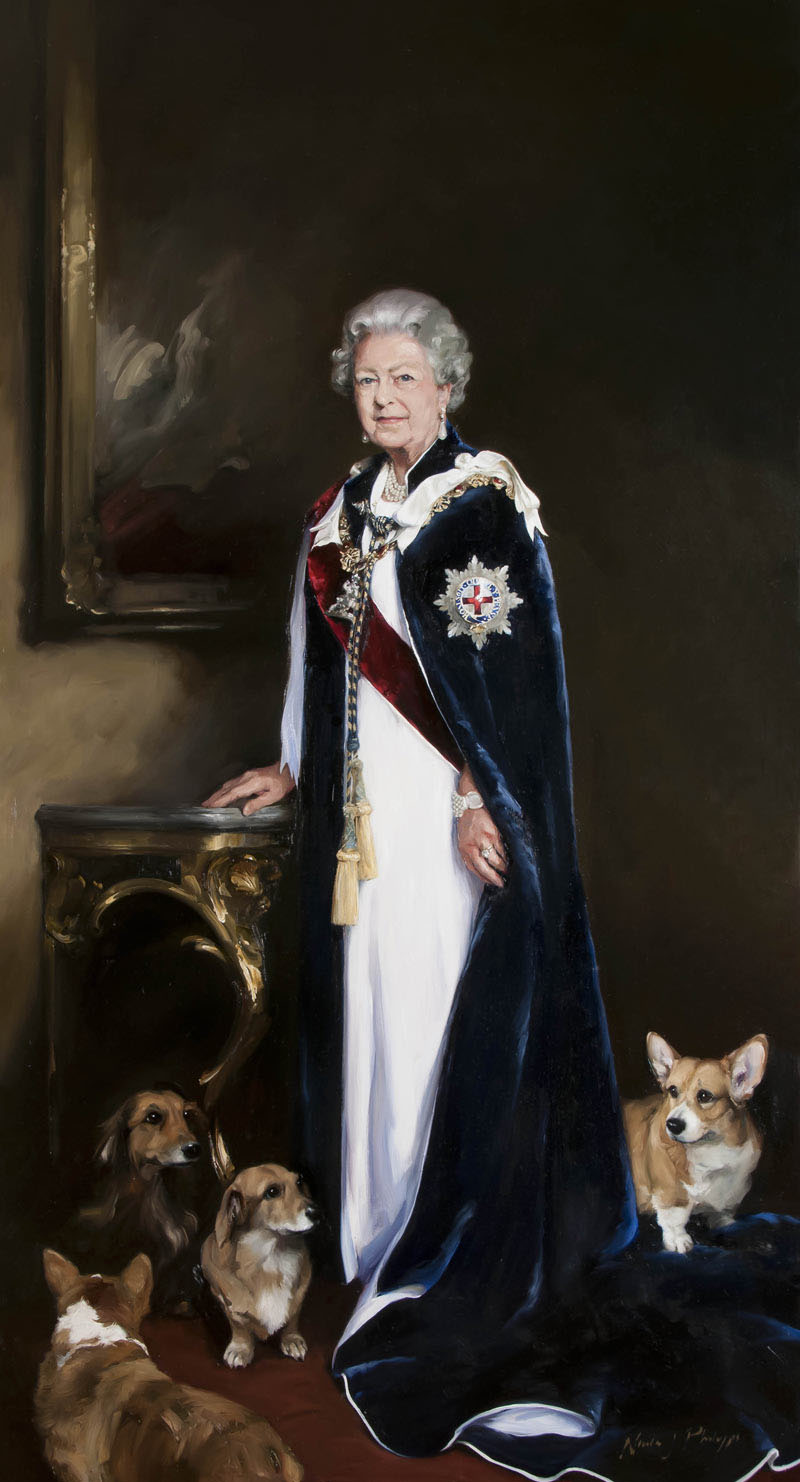 This is the third portrait of the Queen unveiled in London in the last month … and the third dud. A dull formal portrait, it follows the standard, now threadbare iconography for a picture of standing royalty. Indeed, it seems every monarch since George III has been portrayed with a hand on that table. Like the ghosts of Banquo you can see the other pictures emerging from the mist behind. Do you know, equipped with some ingenious software, I’d be surprised if there wasn’t a computer that might more convincingly paint one of these from now on.
This is the third portrait of the Queen unveiled in London in the last month … and the third dud. A dull formal portrait, it follows the standard, now threadbare iconography for a picture of standing royalty. Indeed, it seems every monarch since George III has been portrayed with a hand on that table. Like the ghosts of Banquo you can see the other pictures emerging from the mist behind. Do you know, equipped with some ingenious software, I’d be surprised if there wasn’t a computer that might more convincingly paint one of these from now on.
Background, robes and dogs are as slickly painted as you’d expect from a graduate of the Chocolate Box School. But as usual the real problem lies with the likeness. We know intimately the appearance of this sitter who is daily featured on television and in newspapers. Such familiarity means that, unlike painters of the pre-photographic past, today’s artist must get the likeness spot on. In Nicky Phillips’s effort, we recognise the sitter well enough, not least because the Queen’s hairdo and clothes are unique, but the facial features aren’t accurate. She doesn’t actually look like this, and never has; a distant foreign relative of the Queen perhaps, but not the Queen herself. The sad truth is that the basics of portrait painting aren’t taught in art colleges. We no longer train painters to have the drawing skills to catch a likeness with effortless precision every single time. The result is that our artists look as though they are labouring like slaves to get right even the basics.
Earlier this month a newly unveiled portrait of the Queen looked more like comedian Stanley Baxter impersonating her. This one more resembles a bloke wearing a wig and earrings with a hint of Churchill. Isolate the face so you see only the features and it is unrecognisable as the Queen.
David Lee
The Jackdaw, June 2013
